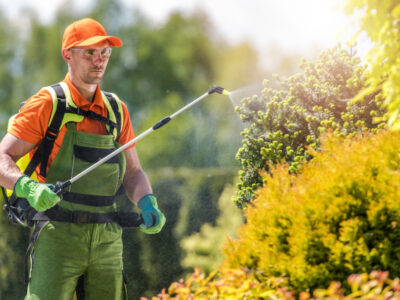
People buy fruit trees each year to cultivate fresh produce at home and to develop attractive landscapes that entice pollinators. Apples, in particular, have a long history in the British Isles and hold a firm place in both cultural and culinary traditions. Growing them today can be surprisingly straightforward, provided you understand what makes these trees thrive in modern gardens.
A nursery specialist at CRJ FruitTrees observes that the choice of variety, rootstock, and growing location significantly influences each tree’s overall performance. “When you buy apple trees online, it is essential to look at how each variety fares in different climates and soil compositions,” one specialist explains. “Opting for carefully matched rootstocks is also beneficial, as they offer consistent crop size and make ongoing care easier.”
Below is an in-depth exploration of the main factors to consider when establishing an apple orchard, whether you are planting a few trees in a suburban garden or planning a larger fruit collection to enjoy for years to come.
Britain’s Apple Heritage
Apples have featured in British kitchens and farmsteads for centuries. They were once a staple fruit for both fresh eating and cooking, with varieties specifically bred for their taste, storage potential, and suitability to regional growing conditions. Many villages had their own special strains, which local communities safeguarded as part of their heritage. Over time, the rise of commercial production led to a narrower range of supermarket apples, yet traditional cultivars remain cherished by orchard enthusiasts keen to preserve the diversity of flavours and appearances.
Today’s home gardener can choose from hundreds of varieties, each adapted to particular locations. This multiplicity of options is one reason why many decide to invest in multiple apple trees. Specific cultivars can offer robust yields in cooler regions, while others excel in warmer microclimates. By selecting carefully, you can enjoy everything from tangy cookers and sweet dessert apples to more unusual dual-purpose varieties that serve multiple roles in the kitchen.
Choosing the Right Location
Before any tree goes into the ground, determining a suitable site can set the trajectory for success. Apple trees need adequate sunlight to produce sugars in their fruit, generally requiring at least six hours of direct light daily. In the UK, having consistent access to sunlight throughout the main growing season is often more important than exposure to heat, though well-situated trees can mature faster in warmer pockets.
An orchard site should also offer good soil drainage. Apple roots can struggle in heavy, waterlogged conditions, especially if the ground remains saturated for prolonged periods. Elevating the planting area slightly can help drain water, and if that is not possible, improving the soil with organic matter can greatly enhance its structure. Addressing factors such as persistent shade from neighbouring buildings, limited space for tree canopies, or proximity to strong winds is crucial before planting begins.
In smaller gardens, spacing might be at a premium. Dwarf and semi-dwarf rootstocks can be an ideal solution in these circumstances, as they allow multiple apple trees to flourish in a confined area. Pruning also becomes more manageable, helping you ensure each specimen receives sufficient sunlight and airflow, which reduces the likelihood of fungal infections.
Rootstock Significance
An apple tree’s rootstock is pivotal to its long-term success. Not only does it determine the mature height, but it also influences aspects such as cold hardiness, disease resistance, and even fruiting time. Various commercial rootstocks, often labelled with an ‘M’ or ‘MM’ prefix followed by a number, provide a predictable pattern of growth that orchardists rely on.
M26, for instance, is a widely known semi-dwarf rootstock suitable for many garden settings. It generally reaches about three metres in height, offering a compact form that is easy to maintain. MM106 is more vigorous, growing to around four to five metres and suited to orchard-scale planting. These tried-and-tested rootstocks help ensure consistent performance and reduce the guesswork for new growers.
The decision on which rootstock to use ties in closely with the planting site. A dwarf rootstock is often best for small gardens, allowing the grower to maximise limited space. In a larger orchard or allotment, a more vigorous rootstock can provide more bountiful harvests, though it requires adequate room to spread. Matching both the variety and rootstock to your local climate and soil composition is an effective method for long-term success.
Pollination Partnerships
Apples depend heavily on effective pollination to set fruit. Most varieties are not self-fertile, meaning they require pollen from a different yet compatible variety that flowers at the same time. Grouping trees by their flowering period—often classed as early, mid, or late—helps ensure there is overlap for cross-pollination. Planting at least two different varieties with matching flowering windows is a straightforward solution.
Alternatively, some apple trees are self-fertile, although they often benefit from the presence of pollinating companions, even if it is not strictly necessary. Crab apples, known for their ornamental blooms, can act as universal pollinators, making them valuable additions to mixed orchards. Bees, hoverflies, and other pollinators are fundamental to this process. By welcoming beneficial insects into your garden, your apple harvest will often increase substantially in both quality and quantity.
Soil Preparation and Planting
Preparing the soil is a critical step before setting trees in place. Loosening the planting area and removing deep-rooted weeds helps roots establish a secure foundation. If working with heavy clay soil, adding well-rotted compost or other organic matter can improve aeration and drainage. In sandy soils, organic matter aids in water retention and fosters a richer environment for beneficial microorganisms. The goal is to craft a balanced, nutrient-rich growing medium that supports sustained tree growth.
When planting a bare-root apple tree (often done in late autumn or early spring), digging a wide hole to accommodate the root system is important. The root flare, where the trunk broadens into the root system, should sit at or just above ground level. Overly deep planting can encourage rot around the trunk base, leading to compromised growth. Backfilling with native soil mixed with compost sets a stable environment. A layer of mulch on top helps retain moisture and further suppress weeds, especially through the first few years as the tree becomes established.
Early Tree Training
Guiding a young apple tree’s shape is often referred to as tree training. This process influences the angle and distribution of limbs, helping them develop a strong branch framework that can carry fruit without undue stress. In a classic orchard scenario, a central leader or open-centre shape is commonly used. With a central leader, the trunk remains the tallest vertical point, with scaffold branches layered below. An open-centre or vase form features several main branches emerging from the trunk, creating a bowl-like canopy.
Proper training ensures adequate airflow around the foliage, reducing fungal disease risks. Sunlight also penetrates evenly, promoting uniform fruit ripening. Using support stakes and ties in the early years can help guide the trunk and scaffold limbs into positions that encourage balanced growth. If a branch grows too quickly or develops at a narrow angle, gently adjusting its position with soft ties can correct the trajectory and prevent future complications.
Pruning Methods
Pruning is key to maintaining a healthy apple orchard. The dormant season, typically late winter, is often the best time for structural pruning, since leaves have dropped, exposing the tree’s framework. Removing crossing or damaged branches encourages new, vigorous growth in the coming spring. Summer pruning, meanwhile, can help control overly robust growth and channel the tree’s energy into fruit production instead of excessive foliage.
For younger trees, pruning focuses on shaping the canopy. For established specimens, it shifts to removing deadwood, thinning overcrowded interior branches, and encouraging fresh fruiting spurs. Avoid excessive pruning in one session. Over-pruning can cause stress or lead to a surge in water shoots, which are vertical, non-fruiting branches that sap energy from productive limbs. Moderate, regular pruning sessions maintain the ideal balance between structure and vigour.
Fertilisation and Nutrient Management
Like all fruit trees, apples need a balanced supply of macro- and micronutrients. Nitrogen is essential for leaf development, while phosphorus supports root health and potassium aids in fruit growth. Applying a well-rounded fertiliser in early spring, just before the onset of new growth, can boost yields. Additional compost or rotted manure can be lightly forked into the soil, or used as mulch, to improve overall fertility.
Monitoring nutrient levels over time is also wise. A deficiency in a particular mineral—like iron, magnesium, or boron—can manifest as leaf chlorosis, poor fruit set, or other ailments. Regular soil testing ensures that you can correct any imbalances quickly. Over time, as your orchard matures, you will develop a better sense of each tree’s needs, refining your fertilisation schedule to maximise health and productivity.
Dealing with Pests and Diseases
In any fruit-growing venture, pests and diseases are inevitable challenges. Common issues for apples in Britain include codling moth larvae, apple scab, and aphids. Taking a preventative approach is often the best strategy. Encouraging beneficial insects like ladybirds and lacewings helps keep pest populations in check. Removing fallen fruit and leaf litter at the end of the season minimises overwintering sites for pests. Good pruning practices and an open canopy discourage fungal infections by improving airflow.
Organic or synthetic sprays might be used selectively if infestations or infections become severe. However, a carefully balanced approach remains preferable to routine spraying. Monitoring your orchard for early signs of problems—and addressing them right away—can significantly reduce the likelihood of larger outbreaks. Cultivating disease-resistant varieties can also lessen the overall need for chemical intervention, making your orchard more self-sustaining over time.
Balancing Orchard Biodiversity
An apple orchard can be far more than a standalone collection of fruit trees. By introducing other fruit species such as pears, plums, or cherries, you can create a tapestry of flowering times that extends pollinator activity over multiple months. Similarly, including shrubs, perennial flowers, and ground covers fosters a more diverse ecosystem that supports beneficial insects, birds, and other wildlife. This diversity often leads to improved pollination rates, reduced pest pressure, and a more vibrant landscape.
Companion planting is another strategy that can help. Certain herbs, like chives and mint, may deter specific insects while adding colour and utility to the orchard floor. Marigolds, nasturtiums, and other flowering plants attract pollinators and beneficial predators that help keep pest populations in check. A more holistic orchard design, which accounts for multiple species and uses, can transform a simple row of apple trees into a thriving sanctuary.
Climate Considerations
Apple trees can adapt to a range of British climates, provided the variety and rootstock are well-matched to local conditions. In regions with milder winters, such as parts of southern England, certain early-flowering varieties might be at risk if a sudden frost damages their blossoms. In cooler areas, cultivars with later blooming times can be safer bets. Gardeners in the north or in higher elevations should look for varieties renowned for their frost tolerance.
Rainfall can be another factor. While moisture is critical during the growing season, prolonged wetness can raise the likelihood of fungal diseases such as scab or mildew. Good orchard management, including well-spaced trees and pruning for airflow, helps mitigate this risk. Mulching is also a double-edged sword; it retains moisture but can trap too much if the weather is continually wet. Adjusting your management techniques to local rainfall levels can keep your orchard balanced and healthy.
Harvest Timing and Storage
Apples typically ripen between late summer and late autumn, depending on the variety. Early cultivars may be ready as soon as August, while late apples can hang on the tree into October or even November. Determining the perfect harvest moment often involves a combination of visual cues and taste tests. A mature apple usually comes away from the branch with a slight upward twist, and the seeds inside will have turned brown.
Once harvested, proper storage extends the usable life of your apples. Cool, dark, and slightly humid spaces such as cellars or garages can keep fruit fresh for weeks, or even months in the case of certain storage varieties. Gentle handling during picking is crucial; bruised fruit spoils faster, potentially affecting neighbouring apples in storage. Periodically inspect stored fruit and remove any that show signs of rot to prevent spreading.
Long-Term Maintenance
A healthy orchard does not appear overnight. Consistent care during the first few years sets the stage for decades of productivity. Watering young trees during dry spells is essential until their root systems become established. After they have matured, most well-chosen varieties on suitable rootstocks require minimal irrigation, except in times of extreme drought. An annual mulching of compost or well-rotted manure boosts soil fertility.
Continual observation and occasional interventions keep pests and diseases at bay. Some organic gardeners opt for measures like pheromone traps to disrupt codling moth mating cycles, or horticultural oils to smother over-wintering insects. Others prefer a more conventional approach, using approved sprays sparingly if serious problems arise. Whichever method you choose, consistent monitoring and early action are the keys to an attractive and productive orchard.
Encouraging Wildlife
Modern environmental concerns have led many gardeners to ask how they can contribute to conservation efforts. An orchard provides natural shelter and food sources for a range of wildlife. By letting certain sections remain less manicured—allowing wildflowers or meadow grasses to flourish—you encourage pollinators and small insects that form an essential part of the food chain. Adding bird nesting boxes or small ponds can further transform your orchard into a vibrant ecosystem.
The presence of wildlife, in turn, benefits the orchard. Birds can help control insect populations, while pollinators ensure your apple blossoms produce maximum fruit. The synergy of horticulture and nature becomes evident, revealing that an apple orchard can be both a source of nourishment for people and a haven for biodiversity. Striking this balance rewards not only the orchardist, but also the wider environment.
Culinary and Cultural Appreciation
Cultivating apples connects gardeners to a long cultural tradition of enjoying fresh produce, making ciders, preserves, and a host of classic recipes like pies and crumbles. By planting heritage or region-specific varieties, you can rediscover tastes that were common in past generations. Some apples have subtle hints of nuttiness or floral notes, while others are distinctly sharp or sweet. Part of the pleasure lies in experimenting with different cultivars until you find those that best match your preferences for fresh eating or cooking.
Sharing your harvest with friends and family can introduce others to flavours not found in supermarkets. The natural cycle of blossom in the spring and fruit in the autumn also lends a rhythmic pattern to life in the orchard, marking the passage of the seasons. Many orchard owners find that the experience becomes a cherished routine: watching for buds, greeting the bees, and eventually gathering baskets of ripe apples as the nights begin to draw in.
Balancing Modern Innovations and Traditional Practices
Although orchard management is steeped in tradition, modern research has opened new possibilities for improving fruit production while reducing environmental impact. Techniques such as regenerative agriculture stress building healthy soil through minimal tillage, cover cropping, and compost application. Drip irrigation systems, if needed, ensure water is supplied efficiently, targeting the root zone with minimal waste.
Combining time-tested wisdom with contemporary innovations can produce a sustainable, low-impact orchard. Traditional orchardists might emphasise mixed plantings, livestock grazing under the trees, or using straw mulches, all of which remain viable approaches today. Blending these with advances like automated soil moisture sensors or integrated pest management can lead to a more efficient setup. Ultimately, the methods chosen reflect each orchardist’s values, local conditions, and budget.
Potential Commercial and Community Benefits
Although home growers often plant apple trees primarily for personal use, some enthusiasts expand their orchard enough to sell small batches of apples, juice, or cider. Local farmers’ markets and small shops often welcome unique varieties that stand apart from typical commercial offerings. This approach can add diversity to the local food economy and reintroduce heritage apples to a broader audience.
Community orchards also play a vital social role in some areas, offering volunteer opportunities, educational programmes, and a shared sense of responsibility for the environment. Whether on public land or managed by a group of neighbours, these orchards can become focal points for community interaction, festivals, and workshops. Individuals learn horticultural skills, children gain insight into how food is produced, and local biodiversity benefits from the presence of fruit-bearing trees.
Tree Longevity and Replacement
Apple trees can live for several decades, with some historical trees surviving for more than a century. However, productivity may decline as the tree ages. Older trunks sometimes develop hollows or structural weaknesses. If an apple tree shows signs of significant decline and minimal harvests, replacing it with a younger tree may be the most practical course of action. Alternatively, skilled arborists can prune back weakened limbs or employ specialised techniques to rejuvenate veteran trees, though success rates vary.
Introducing new stock can refresh an orchard, especially if you have discovered new varieties that better suit your taste or local climate. Rotation within the orchard space can also help by allowing soil to recover, although apple replant disease can sometimes pose a challenge if new apple trees are placed too close to old stumps. Careful soil preparation, including adding organic matter and possibly using new soil, can mitigate these issues.
Creating a Lasting Legacy
Establishing an orchard that endures for generations requires a thoughtful approach from the outset. Good site selection, rootstock choices, pollination partners, and ongoing care set the groundwork for healthy, prolific trees. Regular maintenance—pruning, feeding, pest control—ensures your investment in time and resources pays dividends not just for you, but for future gardeners, homeowners, or community members who inherit the land.
When done well, the orchard becomes a living legacy that intertwines horticulture with local ecology, heritage, and community. It is an expression of patience, reflecting the reality that trees take time to bear fruit. The rewards, however, go far beyond the practical benefit of fresh produce. They include a deeper connection to nature’s cycles, a sense of accomplishment in stewarding land responsibly, and the simple pleasure of tasting an apple plucked straight from your own branch.
Evolving your Orchard Journey
For those beginning their orchard journey, the experience unfolds in stages, starting with site preparation, planting, and initial training. As the trees mature, you refine your pruning style and hone strategies for tackling pests or diseases. With each passing year, the orchard’s character evolves, shaped by factors like rainfall, temperature fluctuations, and shifts in pollinator populations. It is a dynamic, living system that responds to how you care for it.
Some orchardists choose to keep detailed records of yields, flowering times, or even the wildlife species they observe. These notes provide valuable insights into how environmental factors change over time. If you find certain varieties thrive while others struggle, you might gradually adjust which trees you cultivate. Over the course of a decade or more, the orchard you envisioned at the start can transform in layout and composition, reflecting the lessons learned from practical experience and the interplay of natural forces.
A Legacy in Every Apple
Tending apple trees invokes a bond with British horticultural tradition. From the earliest orchard plantings recorded in medieval monasteries to the patchwork of smallholdings dotting today’s countryside, the cultivation of apples has shaped landscapes, diets, and cultural heritage. By choosing appropriate varieties, planting them in well-prepared soil, supporting them through balanced pruning and feeding, and encouraging natural pollination, gardeners keep this enduring tradition alive.
Each crisp, sweet bite is a testament to your patience, planning, and ongoing stewardship of the land. While commercial markets focus on a limited range of apple types, the home orchard can indulge in a wide variety of flavours, textures, and colours. Caring for a small orchard can provide deep personal satisfaction. Some find that the work—though often requiring persistence—brings relaxation, companionship with nature, and a real sense of achievement as the seasons pass.
For anyone interested in creating a sustainable, fruitful space in their garden or smallholding, apples remain a compelling choice. As you consider the steps, from selecting the ideal rootstock to perfecting your pruning methods, the potential rewards abound. Whether you dream of making homemade cider, producing your own dried apple rings, or simply enjoying fresh fruit from the branch, an orchard can become a living illustration of how mindful horticulture yields results that feed both body and soul. And once you have mastered apples, it is natural to consider expanding into other fruits, harnessing your growing confidence to plant new varieties and design even more diverse and abundant landscapes.
From a single sapling tucked into a corner of a small urban plot to a grand orchard spanning a few acres, nurturing apple trees resonates with tradition and modern sustainability goals alike. It honours the past while promising a productive future, and each blossom signals the hope of a harvest yet to come. With diligence and enthusiasm, your apple trees can flourish, serving as both a personal joy and a symbol of the enduring partnership between people and the natural world.






